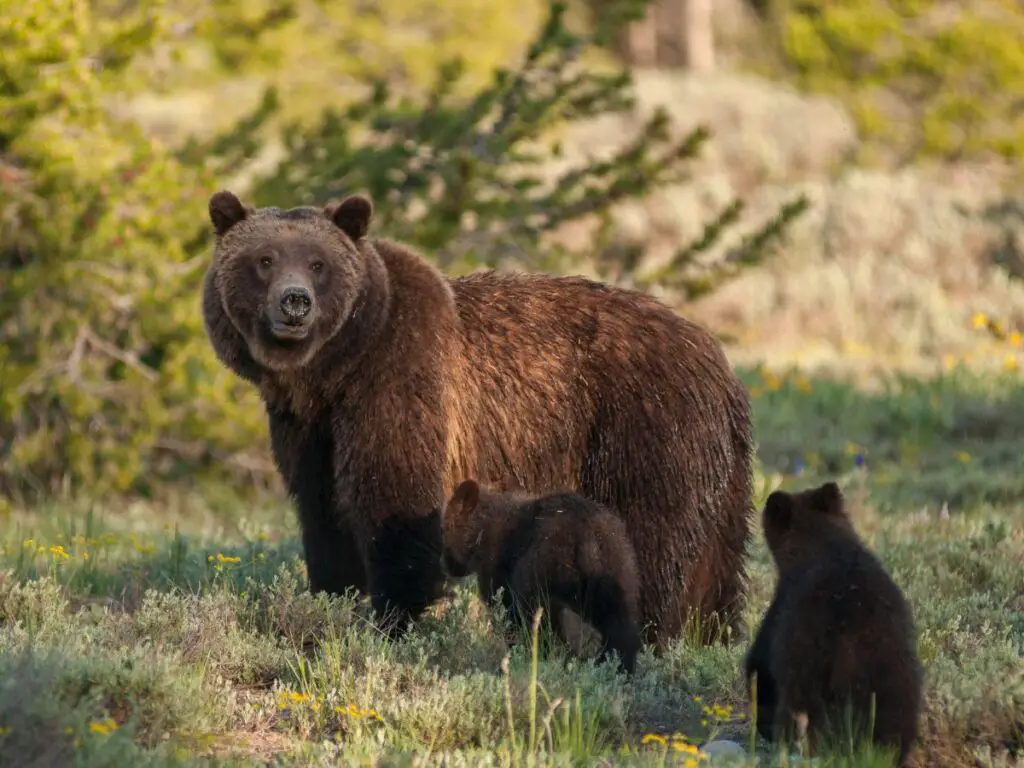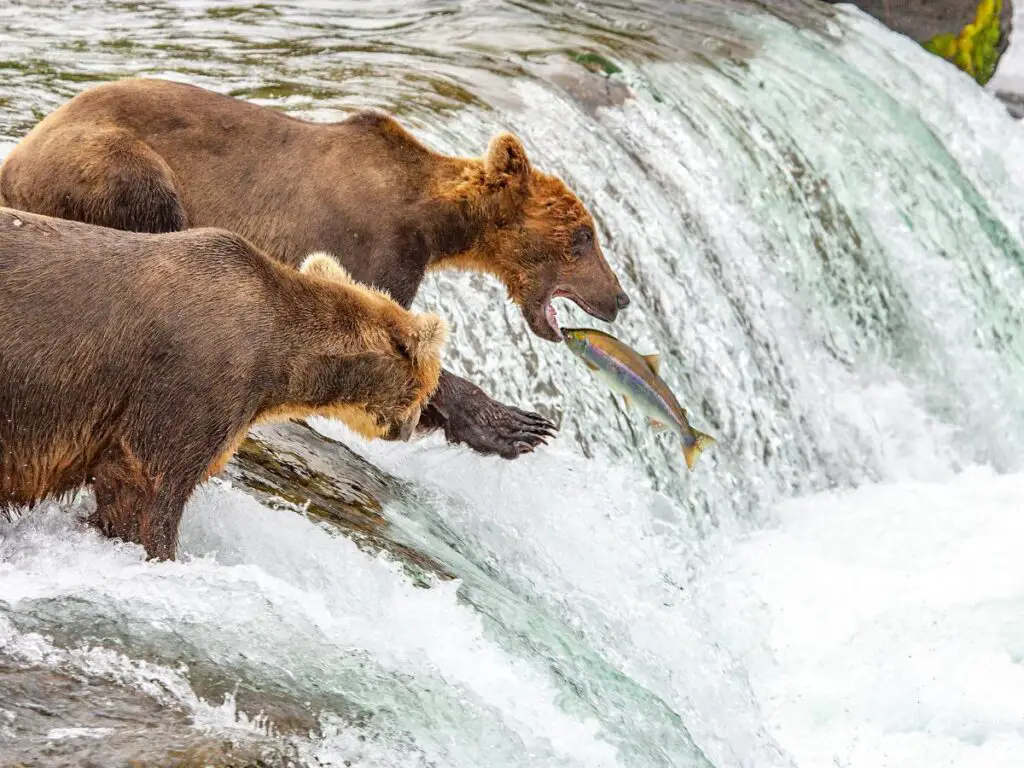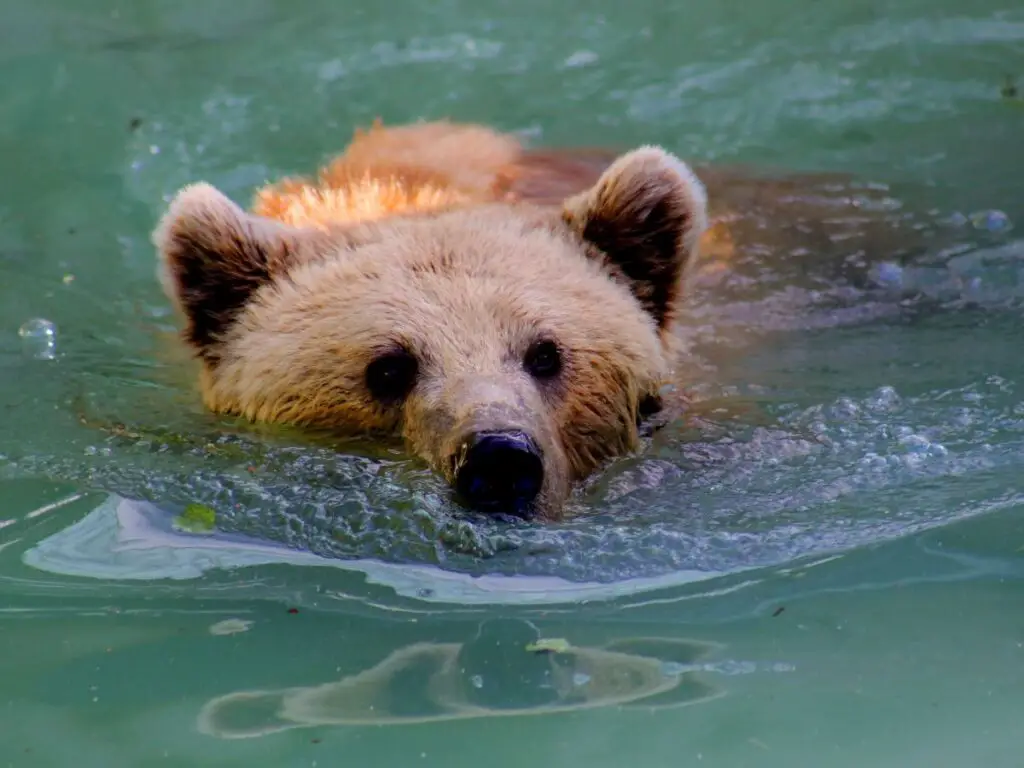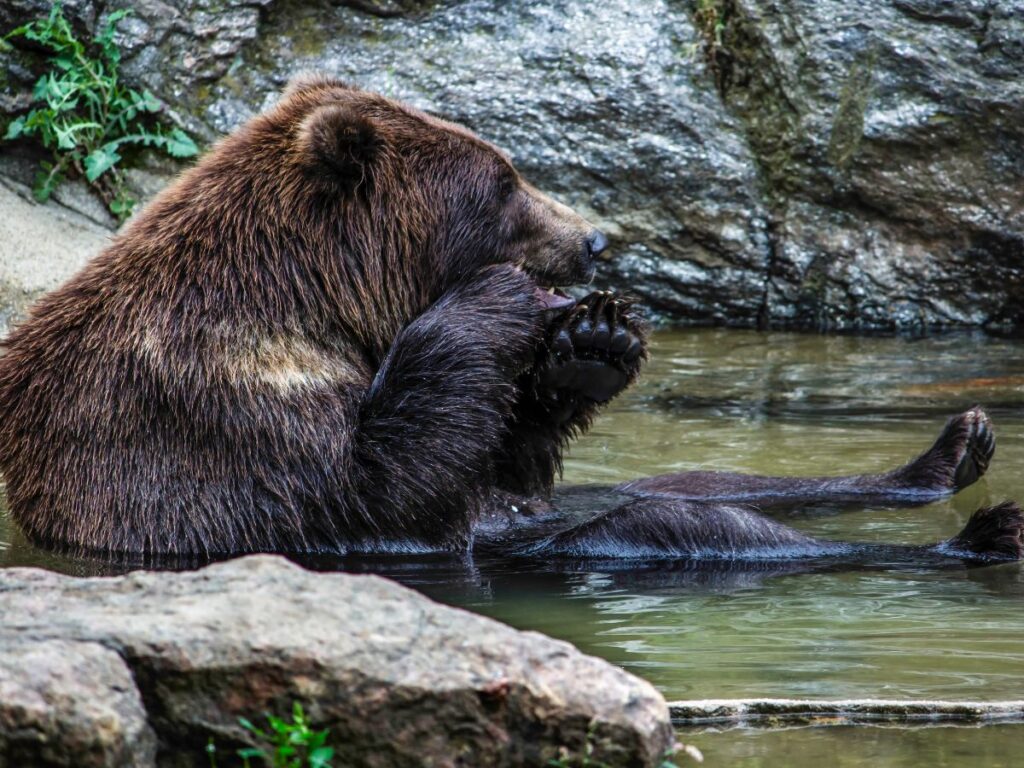The grizzly bear is one of the most iconic and impressive animals in North America. Known for its massive size, sharp claws, and thick fur, the grizzly bear is a symbol of strength, power, and resilience. But beyond its impressive physical appearance, the grizzly bear is also known for its remarkable adaptations that allow it to survive and thrive in a variety of environments.
From its structural adaptations, such as its powerful muscles, sharp claws, and thick fur, to its behavioral adaptations, such as its ability to hibernate, forage for food, and migrate to different habitats, the grizzly bear has developed a range of unique traits that enable it to navigate its environment with ease.
In addition, the grizzly bear’s physiological adaptations, such as its efficient digestive system, high metabolic rate, and ability to conserve water, enable it to extract nutrients from a variety of foods and adapt to a range of environmental conditions.
In this article, we will explore the various adaptations of the grizzly bear in detail, and examine how these adaptations have allowed it to survive and thrive in its challenging and dynamic environment. By understanding the adaptations of the grizzly bear, we gain a deeper appreciation for the incredible diversity of life on our planet and the remarkable ways in which animals have evolved to meet the challenges of their surroundings.
Adaptations Of A Grizzly Bear
Behavioral Adaptations Of A Grizzly Bear
Grizzly bears (Ursus arctos horribilis) are large mammals found in North America, particularly in Alaska and western Canada. These bears have several behavioral adaptations that allow them to survive in their environment. Here are some of the most important behavioral adaptations of grizzly bears and a brief explanation of each:
Hibernation:
Grizzly bears have the ability to enter a state of hibernation for several months each year, which allows them to conserve energy and survive through the winter months when food is scarce. During hibernation, their heart rate slows down to conserve energy, and their body temperature drops significantly, enabling them to use stored body fat for energy instead of relying on external food sources. This adaptation allows them to survive long periods without food or water.
Opportunistic Feeding:
Grizzly bears are opportunistic feeders, which means they will eat whatever is available at the time. This adaptation allows them to survive in various habitats and environments, as they can find food from many different sources.
Fishing:
Grizzly bears are excellent fishermen and will catch fish using their paws or teeth. They often stand in the waterfalls or rapids to catch salmon as they swim upstream. This adaptation allows them to take advantage of a plentiful food source during the summer months when salmon are running.
Territoriality:
Grizzly bears are territorial animals and will defend their home range against other bears. They use vocalizations, scent marking, and physical displays to communicate with other bears and establish their territory. This adaptation allows them to have access to a consistent food source within their territory, without having to compete with other bears for resources.
Maternal Care:
Grizzly bear mothers are very protective of their cubs and will fiercely defend them against any potential threats. They will also teach their cubs how to find food and protect themselves. This adaptation ensures the survival of the next generation of grizzly bears, as the cubs are more likely to survive with the protection and guidance of their mother.

Adaptation to human presence:
Grizzly bears have learned to adapt to the presence of humans in their environment. They have become more nocturnal and avoid human settlements during the day. This adaptation allows them to coexist with humans without conflict, reducing the risk of human-bear interactions.
Burrowing:
Grizzly bears will dig burrows in the ground to escape extreme weather conditions, such as cold temperatures or strong winds. This adaptation allows them to survive in harsh environments, by providing a safe and warm place to shelter during inclement weather.
Structural Adaptations Of A Grizzly Bear
Grizzly bears are one of the most iconic animals in North America, known for their impressive size, strength, and power. To survive and thrive in their harsh environment, grizzly bears have evolved several structural adaptations that allow them to successfully navigate their surroundings. Here are some of the most important structural adaptations of grizzly bears and a brief explanation of each:
Powerful Muscles:
Grizzly bears have strong, powerful muscles in their legs and shoulders that allow them to run quickly and climb steep terrain. They can reach speeds of up to 30 miles per hour for short distances, which is faster than most humans can run. They are also able to climb trees and rocky slopes with ease, which allows them to access food and escape from predators.
Claws:
Grizzly bears have long, sharp claws that are curved and can be up to 4 inches in length. They use their claws for digging, which helps them to find food sources such as roots and insects. They also use their claws for climbing trees and rocky terrain, and for catching prey such as fish and small mammals. In addition, their claws are a formidable defense against predators, and they will use them to establish dominance over other bears.

Thick Fur:
Grizzly bears have a thick, shaggy coat of fur that provides insulation and protection from the elements. The fur on their back can be up to 4 inches long and is dense and oily, which helps to shed water and keep them dry. Their fur also protects them from the sun and insect bites, as well as camouflage in their environment.
Strong Jaw and Teeth:
Grizzly bears have strong, powerful jaws and large teeth that allow them to bite and crush tough materials such as bones and hard-shelled nuts. They also have sharp canine teeth that they use for catching and killing prey. Their strong jaw and teeth also allow them to break into animal carcasses to access the nutrient-rich marrow inside.
Keen Sense of Smell:
Grizzly bears have an excellent sense of smell, which is estimated to be 2,100 times better than a human’s sense of smell. They use their sense of smell to locate food, identify potential threats, and communicate with other bears. They can detect the scent of prey from miles away and can use their sense of smell to track it down.
Large Size:
Grizzly bears are one of the largest land mammals in North America, with males weighing up to 600 pounds and females weighing up to 400 pounds. Their large size protects them from predators, as few animals are willing to confront a full-grown grizzly bear. It also allows them to take down large prey such as moose and elk, which provides a rich source of nutrients.

Thick Skin and Fat:
Grizzly bears have thick skin and a layer of fat that provides insulation and protection from predators. This adaptation also allows them to survive long periods without food, as they can live off of their stored body fat. During the winter months, when food is scarce, grizzly bears will hibernate and live off of their stored fat until food becomes available again in the spring.
Physiological Adaptations Of A Grizzly Bear
Physiological adaptations of grizzly bears allow them to survive and thrive in their challenging environment. By conserving energy, efficiently extracting nutrients from food, and adapting to low oxygen levels and water scarcity, grizzly bears are able to maintain their strength and health, and successfully navigate their habitat. Here are some of the most important physiological adaptations of grizzly bears and a brief explanation of each:
Efficient Digestive System:
Grizzly bears have a highly efficient digestive system that allows them to extract nutrients from a variety of foods. Their digestive tract is long and complex, which includes a large cecum, a pouch-like structure that aids in the breakdown of plant fibers and other tough materials. This enables grizzly bears to consume a wide range of food, from berries and nuts to insects and small mammals.
High Metabolic Rate:
Grizzly bears have a high metabolic rate, which allows them to quickly and efficiently convert food into energy. This adaptation is particularly important during the summer months when food is abundant, as it allows them to gain weight rapidly in preparation for the winter months when food is scarce. Their ability to store excess body fat also helps them to survive through periods of food scarcity.
Adaptation to Low Oxygen Levels:
Grizzly bears are able to adapt to low oxygen levels at high altitudes. They have larger lungs than other animals of similar size, which allows them to take in more oxygen with each breath. This enables them to effectively navigate mountainous terrain and forage for food at higher elevations.
Efficient Water Conservation:
Grizzly bears have the ability to efficiently conserve water in their bodies. They are able to extract moisture from their food and can survive for extended periods without drinking water. This adaptation is particularly important during the dry summer months when water sources may be scarce.
Strong Immune System:
Grizzly bears have a strong immune system that enables them to resist infections and diseases. This is particularly important for bears that live in areas with high densities of other bears, as diseases can easily spread through the population. Their strong immune system also enables them to recover quickly from injuries and wounds.
Excellent Vision and Hearing:
Grizzly bears have excellent vision and hearing, which helps them to detect prey and predators from a distance. Their eyes are adapted to see in low light conditions, enabling them to forage for food at night, while their ears are able to detect sounds at a frequency range that is beyond the human hearing range. This allows them to detect the movement and location of prey and potential predators, increasing their chances of survival.
In conclusion, the grizzly bear is a remarkable animal that has adapted to survive in a challenging and dynamic environment. Through its structural, behavioral, and physiological adaptations, the grizzly bear has developed a range of unique traits that allow it to thrive in a variety of conditions.







Leave a Reply